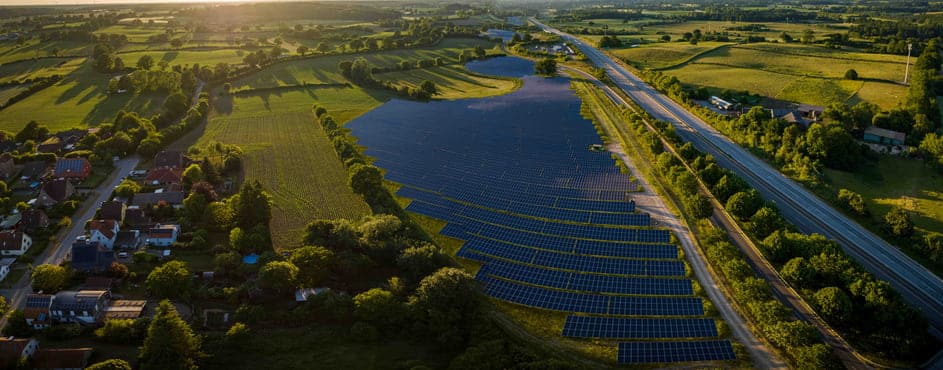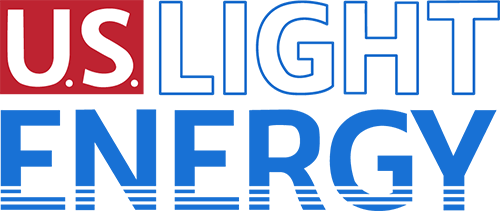
When the idea of going solar comes to mind, many people are concerned about the cost and challenges of installing solar equipment on their homes, properties, or businesses. It may seem like transitioning to solar is only for those with vast resources. Not true! With community solar, everyone can participate. There’s no need to install equipment or incur any upfront costs. From battling climate change to reducing utility bills to eliminating dependence on fossil fuels, community solar can breathe new life into local regions;
Community Solar, Explained
Community solar is a solar energy project that allows customers within a geographic area to subscribe and benefit from its renewable energy output. From homeowners to renters to businesses, multiple customers can participate in a community solar project or purchasing program. Community solar, also known as a solar farm, is developed on vacant land near a local community where solar arrays—groups of solar panels—harness the power of the sun, convert it into electricity, and then transport it to a power grid or substation to be utilized by subscribers. With solar farms, participants don’t have to worry about installing solar equipment on their homes, property, or businesses to access solar energy. All they need is an account with a utility company!
How Does Community Solar Work?
A solar farm’s solar arrays convert sunlight into electricity, which is then sent to a utility grid.
The local utility company pays the community solar provider for the energy it receives from the solar farm. Community solar subscribers receive a portion of the dollar value through a credit from the community solar provider. The community solar provider then submits your membership information to the utility company to apply your credits to your bill.
Community solar subscribers can typically enjoy a guaranteed 10% savings on their utility bill.
6 Key Benefits of Community Solar
Local areas with community solar can provide towns and cities with several outstanding benefits. With community solar, renewable energy is accessible to any household or business with a utility account. Everyone in the community can enjoy lower utility bills while participating in clean, renewable energy. Here are 6 key benefits of subscribing to community solar:
No Upfront Costs
It can be quite expensive for homeowners to implement a personal photovoltaic (PV) system. To begin, the roof has to withstand and support the installation of solar panels. In many cases, the roof itself has to be updated before a single panel can be installed. Once a design is created and permits are secured, solar panels and supporting equipment must be purchased and installed. That includes converting the home’s electrical system to handle and convert solar energy into usable electricity. In many cases, switching to solar is simply not cost-effective for homeowners. With community solar, there are no upfront costs. Subscribers are not required to install solar equipment or even convert their electrical system. Community solar subscribers can simply sign up and save money on utility bills!
Lower Utility Bills
With community solar, subscribers can enjoy a guaranteed 10% savings on energy costs. The amount of money you save is proportionate to the energy you consume, so it is possible to save even more. With no upfront fees or maintenance required, subscribing to a solar community provides a great way to save money on your utility bill.
Increased Accessibility
Anyone with a utility account can sign up for community solar if one is available in the local area. That means you don’t have to be a homeowner to benefit from community solar. For those who can’t install solar arrays, such as renters or apartment dwellers, community solar provides them with an excellent opportunity to participate in clean, renewable energy. Even if you own a home, installing solar may be cost-prohibitive, or the roof may not be suitable for solar installation due to various reasons, such as the condition or limited size of the roof. There may be too many obstructions, like trees or other buildings, for a sufficient amount of sunlight to reach the solar panels.
Environmentally Sustainable
Community Solar harnesses sunlight to create electricity, making it a clean, renewable energy. In contrast, many power plants use fossil fuels like oil, gas, and coal to provide electricity. Not only are fossil fuels non-renewable, they contribute directly to the damaging effects of climate change. Burning fossil fuels releases extreme amounts of carbon dioxide into the atmosphere, causing our planet to warm at an unsustainable rate. As temperatures climb, glaciers melt, and sea levels rise. From hurricanes to heat waves to forest fires and more, the use of fossil fuels significantly impacts our environment. Community solar helps us to eliminate our dependency on fossil fuels. When solar farms generate electricity, they create zero pollution. Participating in community solar allows you to play an active role in fighting climate change.
Promotes Energy Independence
As the US embraces renewable energy, our dependency on foreign oil will diminish. The global oil market can fluctuate, causing price hikes for Americans. Foreign countries can use our dependency on their oil as leverage against us. Community solar can provide accessible, clean, renewable energy for local communities nationwide. When we become independent with renewable energy, we increase our energy security.
Protects Power Grids
Diversity is key when it comes to keeping our power grids and substations running smoothly.
The development of community solar farms throughout the nation allows communities to tap into local power supplies instead of a single power plant. When only one giant power plant is tasked with supplying energy to several communities, it puts tremendous pressure on the system and makes it unstable. If it were to fail, several communities would be affected. Also, when power distribution remains local, it can help reduce the cost of energy transmission. When disasters like hurricanes, windstorms, or heat waves strike, community solar helps to make power grids more resilient.
How To Start a Community Solar Project
The popularity of community solar is increasing every year. Several states are embracing the development of solar farms in local communities. In fact, the state of New York is committed to growing its renewable energy production to an ambitious goal of 100% renewables by 2030. With legislative support, communities will have an easier path to developing community solar.
In order to make a community solar project a reality, there are a few steps to consider:
Connect with A Solar Energy Developer
For communities looking to develop a solar project, partnering with solar professionals is important. From design to site acquisition to permits to implementation and maintenance, a solar energy developer can help communities navigate the challenges of getting a solar farm up and running.
Site Acquisition
In order to develop community solar, there has to be land nearby to house the solar farm. Typically, solar farms require a minimum of ten acres of dry, flat land to meet the energy demands. Several other important factors contribute to a solar farm’s success, such as proximity to a power grid or substation. Solar developers may already have a pre-qualified site capable of meeting your needs.
Feasibility Study
For land owners interested in leasing land for community solar development, a solar developer can conduct a feasibility study to determine the land’s potential for supporting a solar farm.
One important question: Can the energy produced be utilized by the surrounding community?
Site Engineering
Each community solar project is different. Solar farms need to be designed to provide the optimal energy output required. Solar professionals utilize industry-leading methodologies to create safe, efficient designs.
Interconnection Analysis
Once sunlight is collected by solar arrays—a collection of solar panels—it’s converted into usable electricity. That electricity must be transported over three-phase distribution lines to be stored in power grids and substations for community solar subscribers to access.
Solar professionals ensure that all power lines connected can safely accommodate the power transfer.
Financial Analysis
Along with creating clean, renewable energy, community solar farms need to be cost-effective. Solar professionals have experience projecting a community solar project’s potential for economic success.
Permitting
Without proper permits, a community solar project can’t be implemented. Navigating the permitting process can be quite challenging. Solar professionals can work with all Authorities Having Jurisdiction (AHJs) to ensure the community solar project’s successful implementation.
Construction Management
Once a solar farm design, permits, and other assessments have been approved, solar professionals can begin installing and interconnecting solar equipment, such as solar arrays and inverters.
Subscribe
With a fully functioning solar farm in the area, everyone in the community can participate. As long as they have an account with a utility company, they can now subscribe to clean, renewable energy!
Community Solar with US Light Energy
With over thirty years of solar PV, energy industry, and real estate development experience, US Light Energy specializes in Community Solar facilities and renewable energy solutions for residential, small commercial, and municipal customers. We work with land and business owners, utilities, engineers, and community officials to make the most successful Community Solar project possible. Subscribers to community solar accumulate credits towards the balance of their utility account, guaranteeing a savings of 10%. Contact us today to learn how we can help you get your community solar project off the ground. US Light Energy is leading the charge for a new generation.
